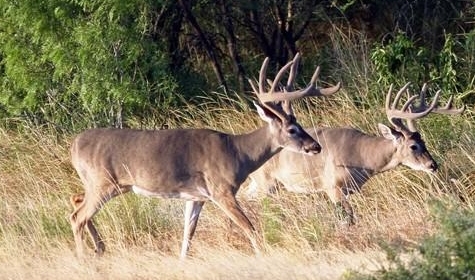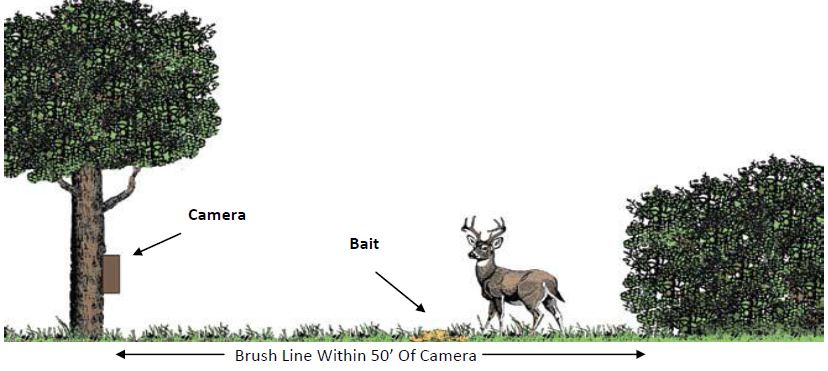White-tailed deer are the most hunted big game animal in the US. Over the past few decades, deer hunters across the country have become increasingly involved in deer management. Collecting reliable biological data is the backbone of a white-tailed deer management program.
In order for a management program to be successful, the manager must diligently monitor trends in population density, herd composition, body condition and habitat quality. Collectively, these data allow deer managers to make informed management decisions that will help maintain a stable and healthy population.
Why Survey Deer?
Since, the early 1930’s, researchers, biologists and land managers have used drive counts, pellet-group counts, aerial surveys, track counts, winter harvest surveys, vehicle mortality surveys, thermal infrared imagery, spotlight surveys and remote sensing to estimate the age, sex and number of deer in local populations. Due to their relative low costs and relatively high precision, many state wildlife departments have primarily used spotlight surveys to estimate statewide deer densities for decades.
Spotlight surveys have also been the most recommended method for density estimation on private lands. However, spotlight surveys are most accurate in habitats with high visibilities and lack of forested cover. In many parts of the white-tailed deer’s range visibility is low and forested cover is the norm.

Using Game Cameras for Surveys
With recent advances in technology and in the innovative ideas of wildlife biologists, the use of infrared-triggered cameras (a.k.a. game cameras or trail cameras) has emerged as an acceptable alternative to spotlight surveys for estimating herd composition and density of deer populations. This method can be especially useful for surveying deer on relatively small tracts of land, properties with poor roads and in densely forested habitats.
In addition to estimating herd composition and density, the camera technique allows hunters and managers to determine the age structure and antler quality of bucks in order to decide which bucks should or should not be harvested.
The accuracy of infrared-triggered camera surveys for whitetail depends upon the ability to attract deer from all age and sex classes to baiting stations. This is best accomplished using whole, shelled corn in late winter, after breeding season has concluded, and before antlers have dropped.
However, in order to determine the number of does and bucks which need to be harvested, density, age and sex ratio estimates are often desired prior to the fall hunting season. In most areas, relatively precise survey results can be obtained by conducting surveys during the month of August. Surveys conducted during this time will increase the chances that fawns will be accompanying the does to bait locations and that acorn drop has not yet occurred.

The following information will provide the step by step process for conducting an infrared-triggered camera deer survey:
- Conduct the survey during the month of August to obtain population estimates, sex ratios and fawn recruitment prior to the hunting season.
- Position cameras near high deer use areas such as food plots, natural food sources and deer trails. Disperse them evenly across the property at a rate of one camera per 100-160 acres.
- Install cameras on a post of some type facing a solid-colored backdrop such as heavy brush to reduce background movement. Backdrop should be 50-100 feet away from camera. Face the camera either north or south to avoid sun glare.
- Remove any standing grass, tree limbs, debris and any other possible obstructions that may interfere with a complete photograph of a deer.
- Place corn on the ground approximately 10 feet from the camera. Turn off all automatic feeders during the survey period. Bait sites can be near pre-existing feeders but not under the feeder. Pre-bait the area 4-6 days before you begin taking photographs.
- Install and set the camera to record date and time. Set the sensor unit to a 5-10 minute delay.
- Photograph deer at each station for 10 consecutive days. If cameras are limited, cameras can be rotated to a new unphotographed station each 10 day period.
- Check stations on a regular basis to ensure bait is available and cameras are functioning properly.
- At the end of the survey period, analyze all of the photos and tally the number of bucks, does and fawns. Only tally a deer one time for each “visit” to the bait station even if there are numerous photos from that same visit. Then use antler characteristics, hair color and body traits to identify the number of individual bucks photographed. Do not include any unidentifiable deer.
- Enter the data from step 9 into the appropriate formulas and perform calculations to determine the estimated population.
SAMPLE: Acres surveyed=600 Camera sites=6 Consecutive days=10
Total # of deer photographed=196
Bucks=36 Individual bucks identified=11
Does=108
Fawns=52Use the ratio of individual bucks identified (11) to the number of bucks photographed (36) as the population estimate multiplier: 11/36=0.31
Estimated Populations:Bucks = 11 Acres per deer: 600/60 = 10.0
Does = 108 x 0.31 = 33 Doe-to-Buck Ratio: does/buck=33/11=3.0 or 3:1
Fawns = 52 x 0.31 = 16 Fawn Production: fawn/doe=16/33=0.48 or 48%
Total Population = 60 deer
Analysis of Camera Surveys for Deer
Recent research suggests that camera surveys may underestimate the number of does and fawns in a population. Where this occurs, using camera surveys alone may incorrectly estimate doe-to-buck and fawn-to-doe ratios (herd composition) and underestimate the total population. Incidental deer observations should be collected in addition to conducting camera surveys each summer.
Data collected by using game cameras for deer surveys will provide additional herd composition data which can be compared with those collected through camera surveys. If warranted, adjusted herd composition ratios may be applied to camera survey data to obtain population estimates. Remember, regardless of the survey method used, the result is a population estimate and not a true count.